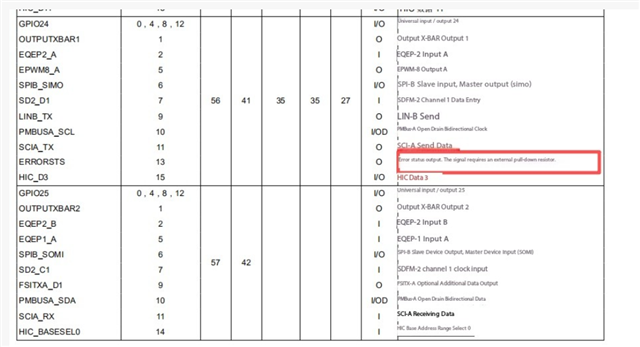Tool/software:

Hi:
There is a phenomenon here where the chip cannot boot when GPIO25 is powered on in pull-down state, but it can boot when in pull-up state. Is this related to GPIO24? The above picture indicates:Error state output. This signal requires an external pull-down resistor.Please ask the expert to help answer this, thank you!

